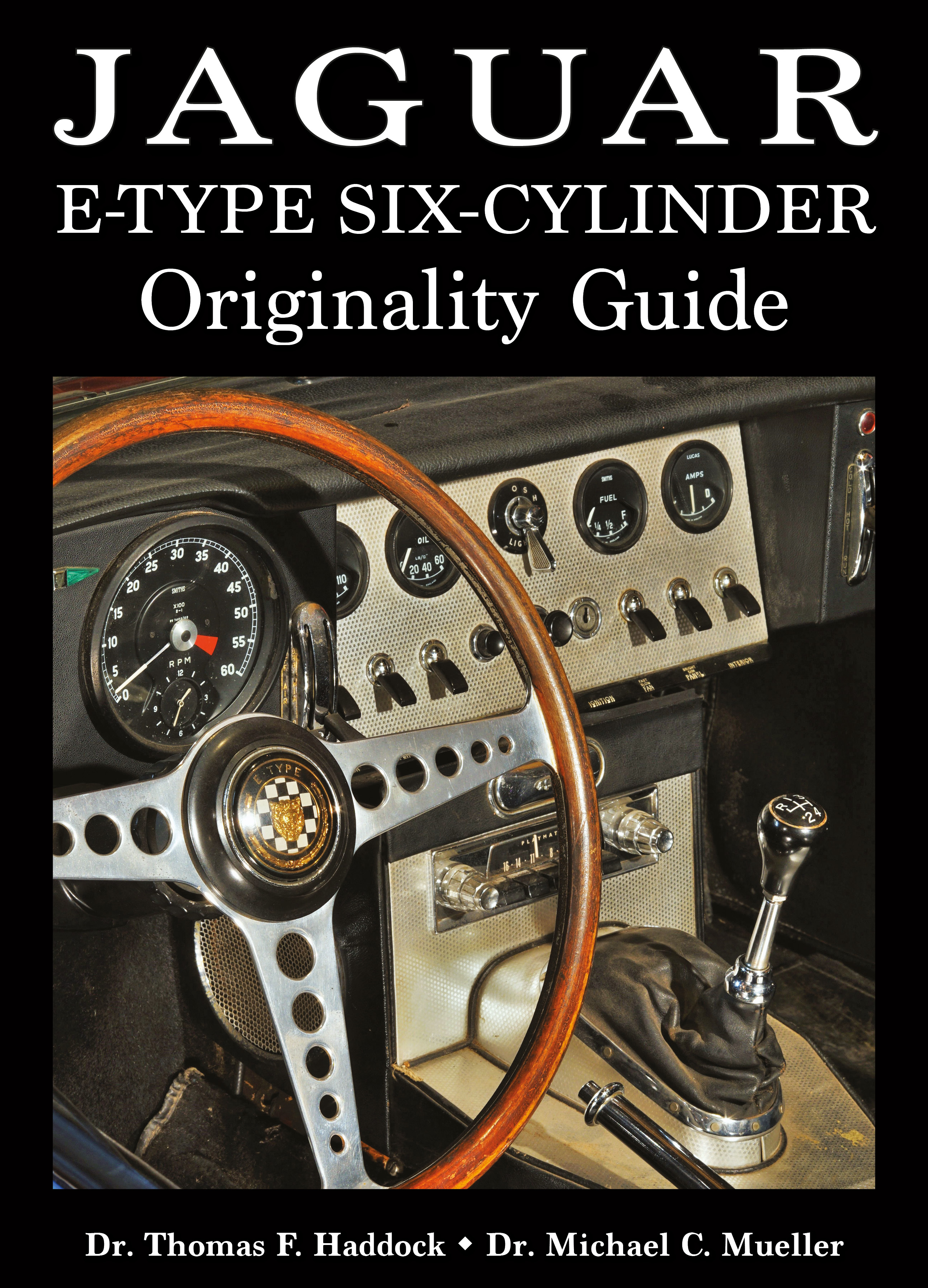
|
|
|
|
|
|
MG TD
Another popular British sports car from the period just preceeding the introduction of the E-type.
|
|
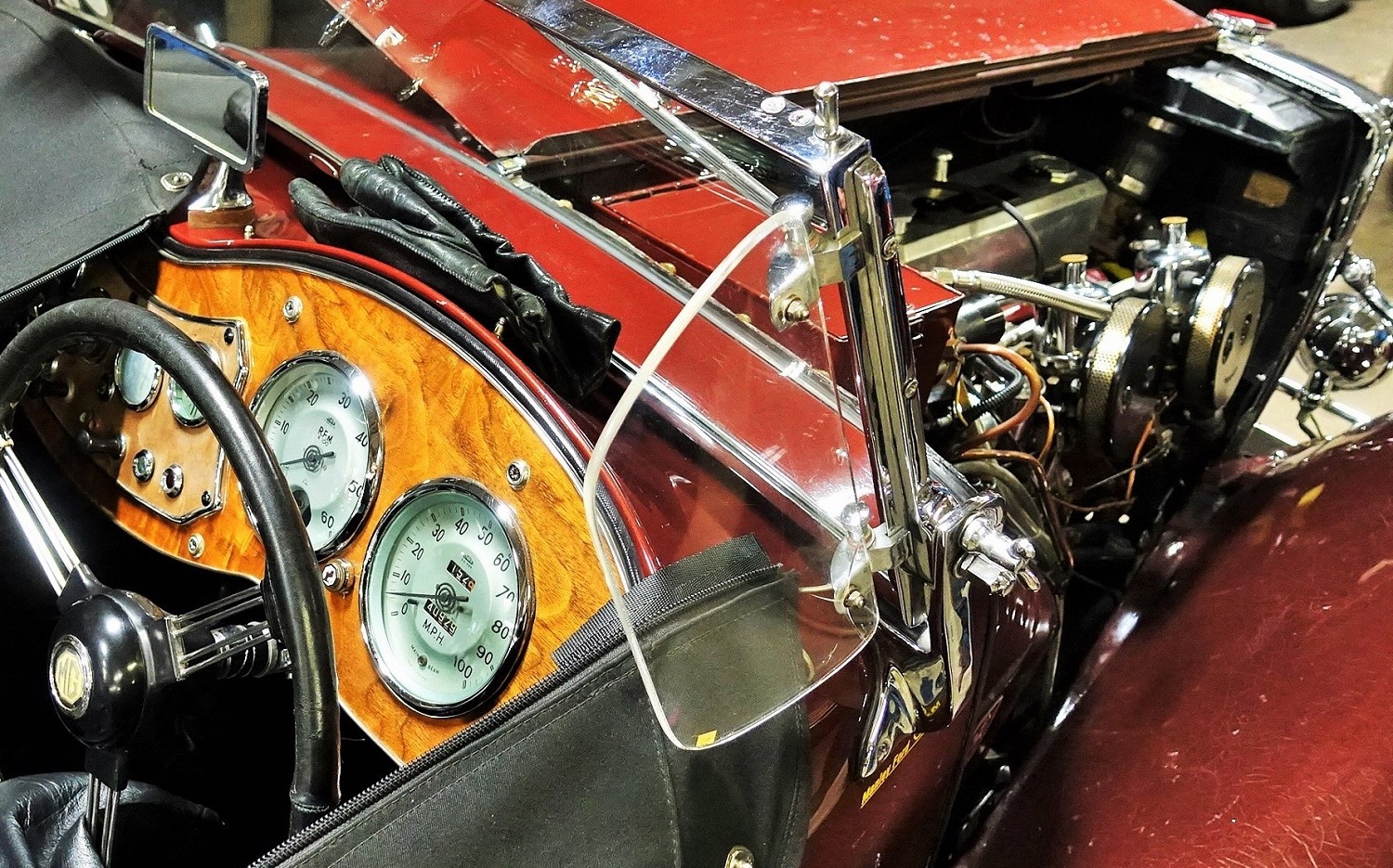
|
|
|
|
|
|
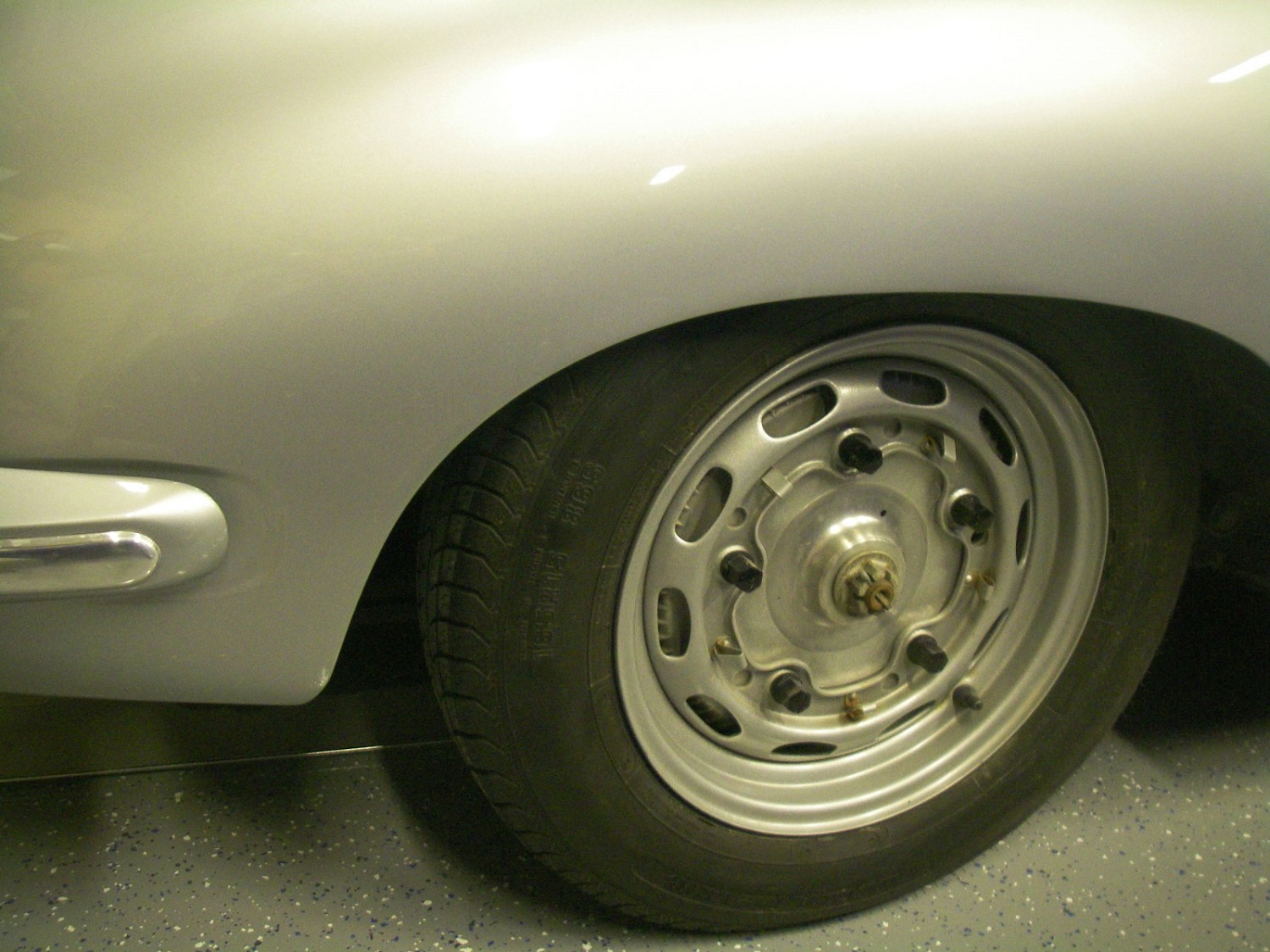
|
|
Porsche 356
The 356 series was in production during the period leading up to the E-type's introduction in 1961, and on into 1965 when the 911 came out.
|
|
|
|
|
|
XK-120
Sitting on a cement slab in a storage facility.
|
|
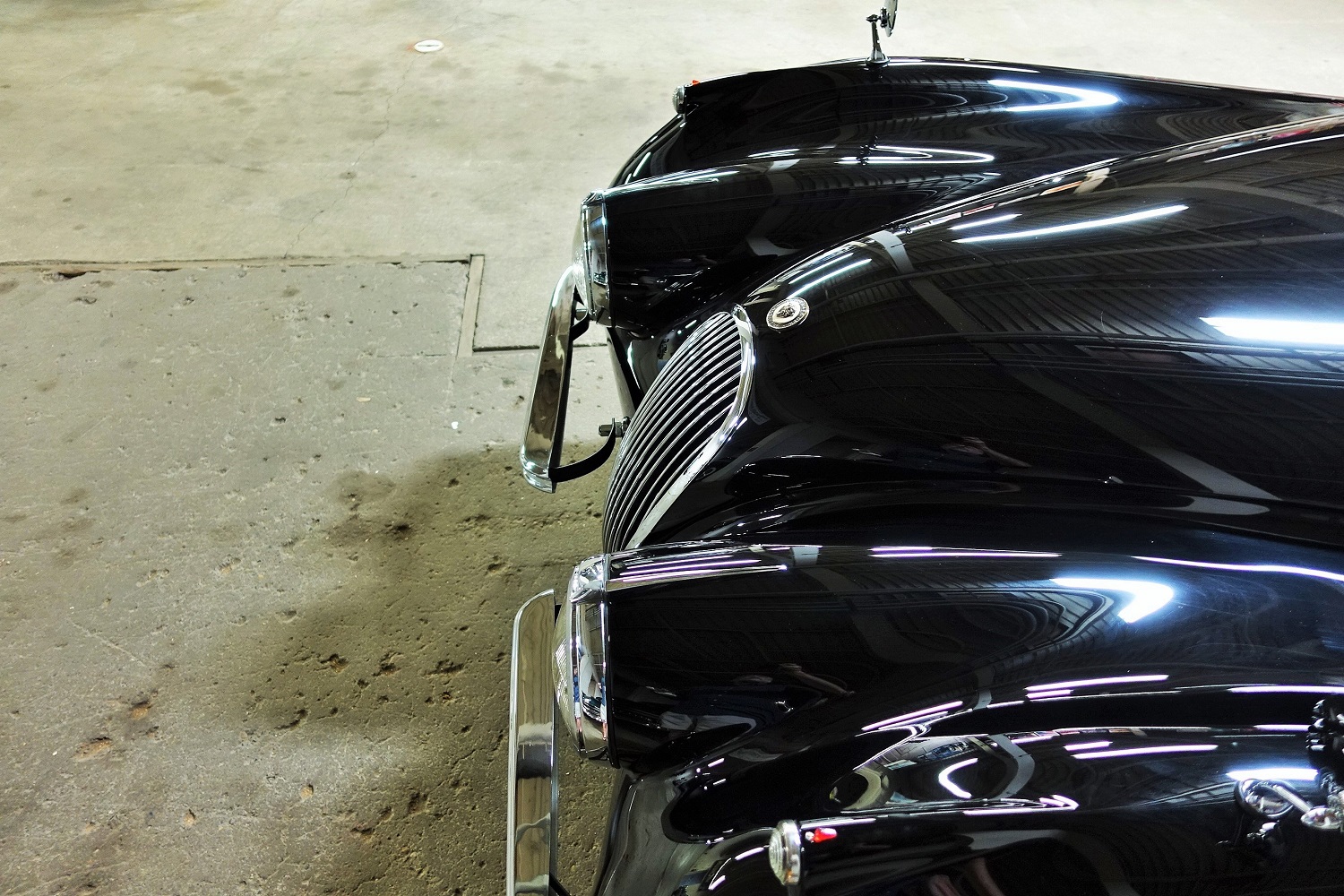
|
|
|
|
|
|
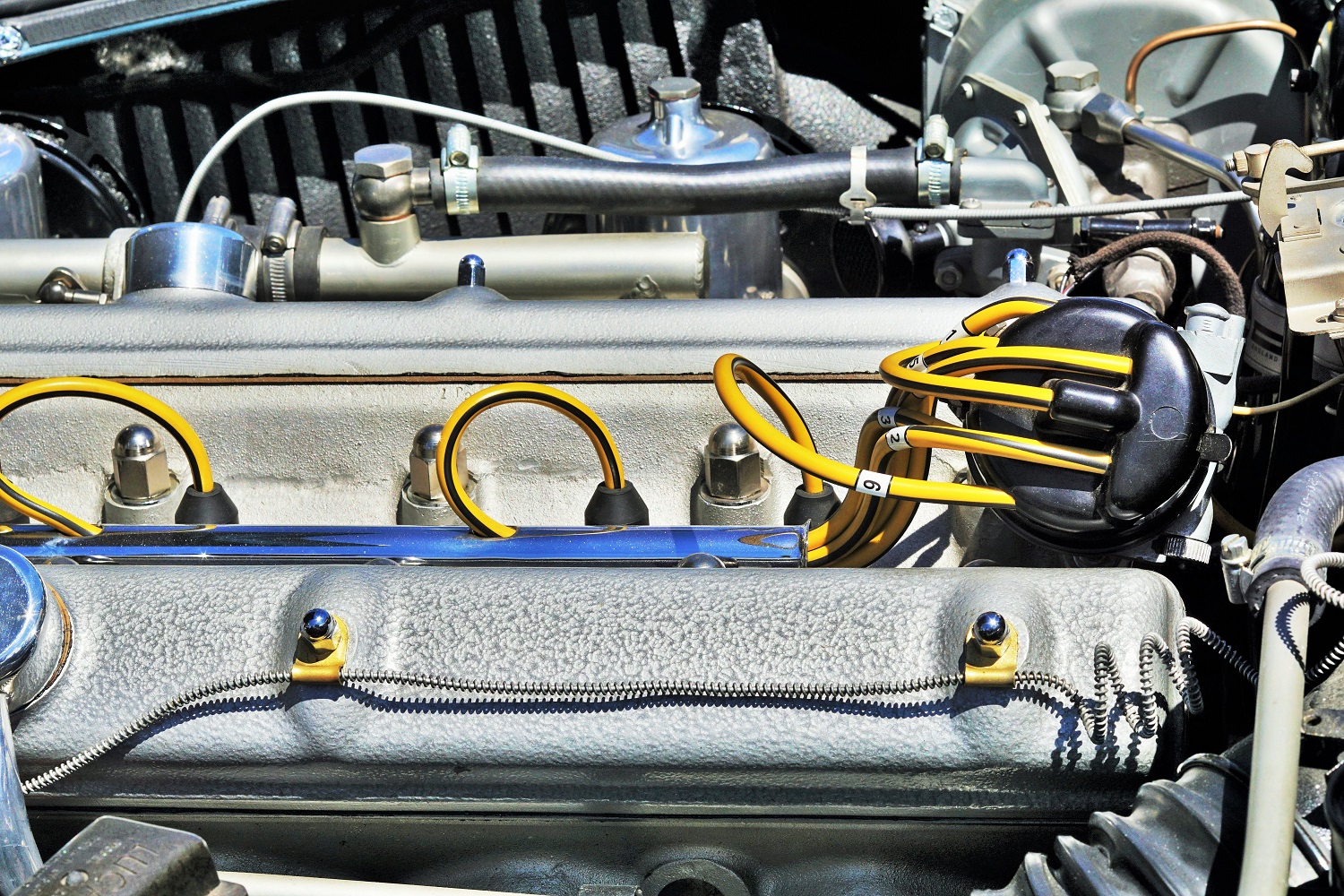
|
|
Aston Martin engine
This restored Aston Martin engine has some similarities to the XK engine, as used in the E-type, including SU HD8 carburetors and chrome domed cylinder-head nuts.
The distributor mounting at the rear of the head is markedly different, though, as well as the single studs holding down the camshaft covers.
|
|
|
|
|
|
Restored MGA
An MGA in storage. Another contemporary of the early E-type.
|
|
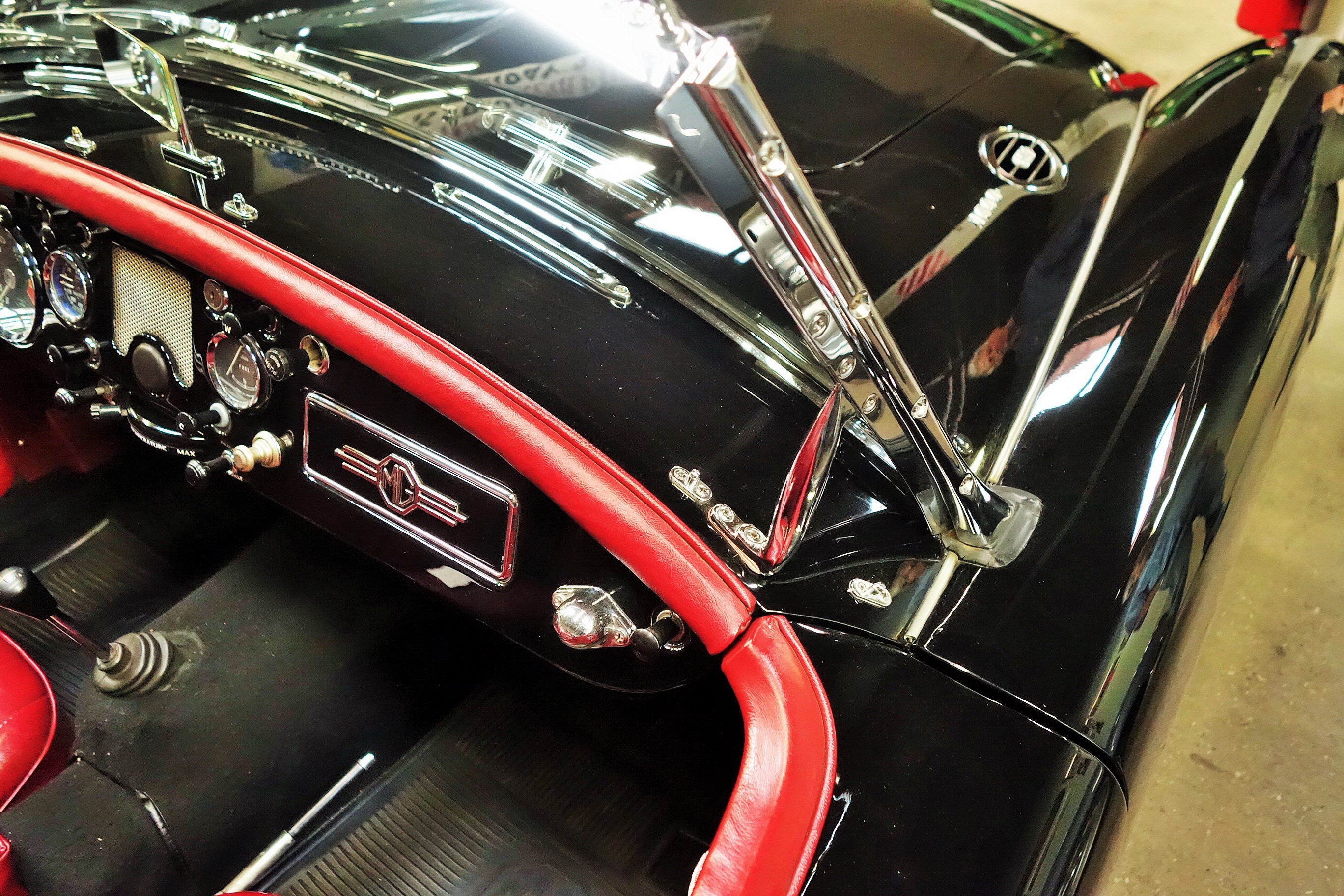
|
|
|
|
|
|
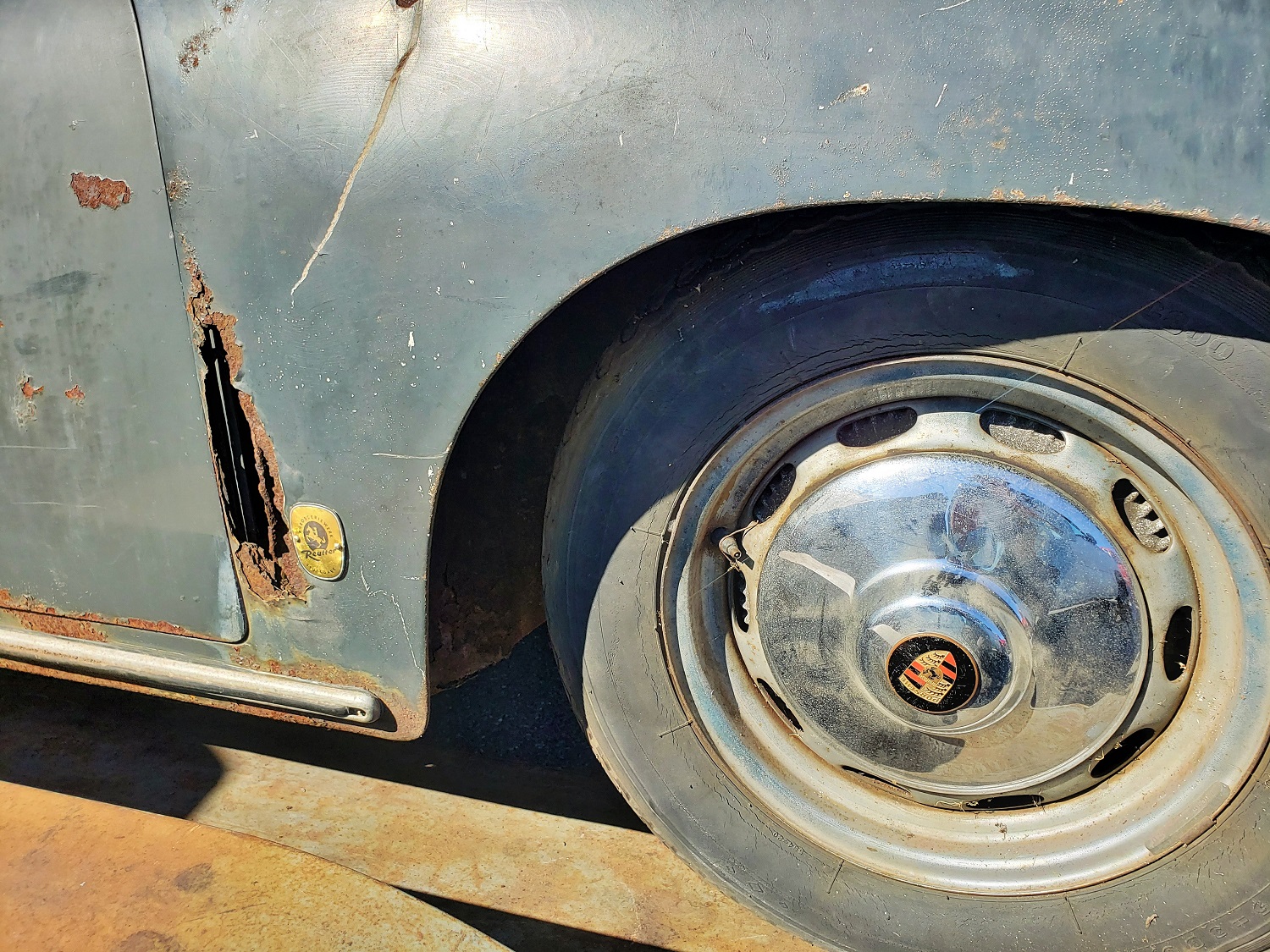
|
|
Unrestored 356
A Porsche 356 was a competitor to the E-type in the U.S. market. Here one sits on a trailer at the Hershey, Pennsylvania, USA, car show in somewhat rough but quite original condition.
|
|
|
|
|
|
MG TC in a crowd
An early post-war MG car at an evening car show. This car was in production during the time of the XK-120.
|
|
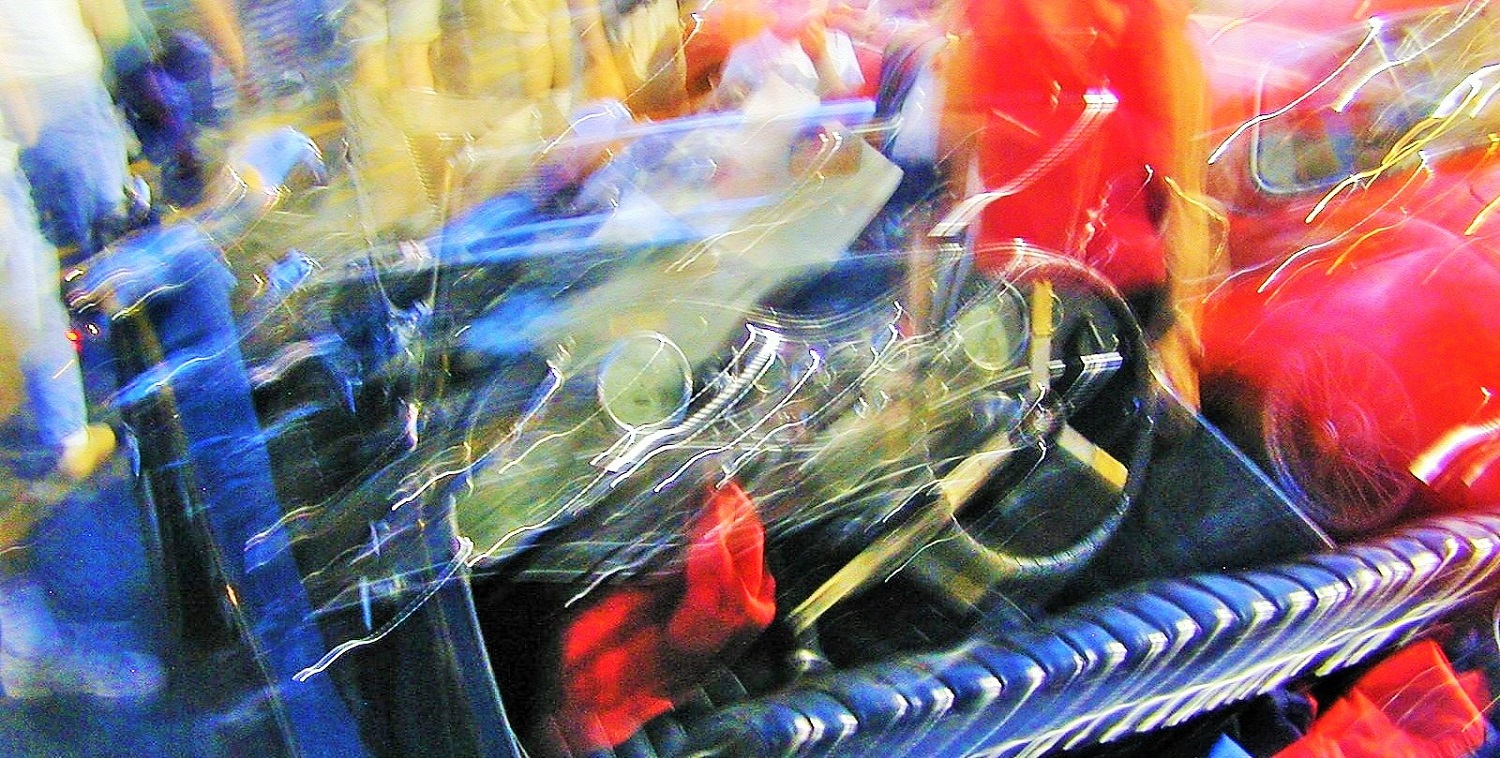
|
|
|
|
|
|
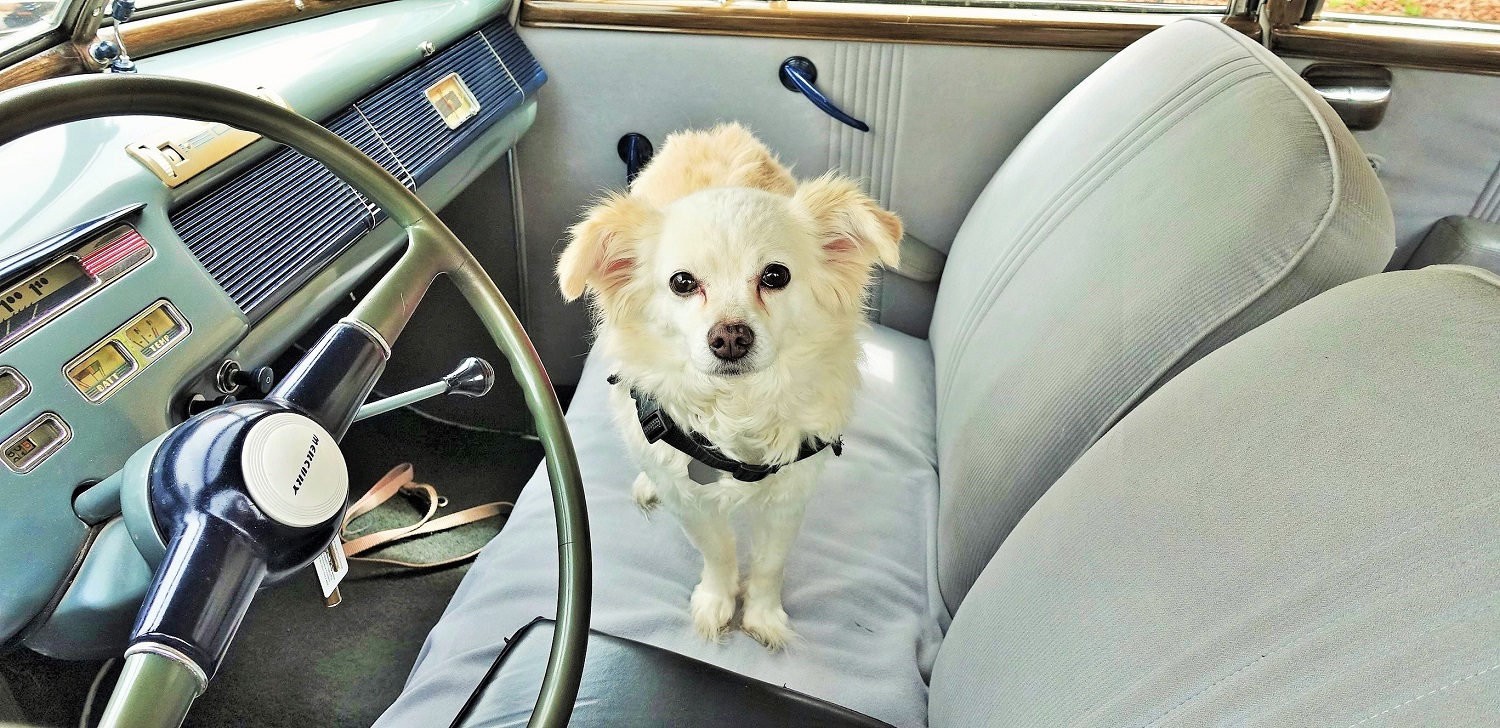
|
|
Passenger in a Mercury
At another car show with mostly American cars, and only one E-type.
|
|
|
|
|
|
Austin Healey 100
The initial 4-cylinder Austin Healey was generally known as the "100-4" after the introduction of its successor, the "100-6."
These early cars had a fold down windshield, as did some other English sports cars of the period. This one, however, slanted back as opposed to folding down toward the front of the car.
This car was introduced during the early 1950s when Jaguar was producing its XK-series sports cars.
It later evolved into the "3000" model, also 6-cylinders, that was a contemporary of the E-type up to 1967.
|
|
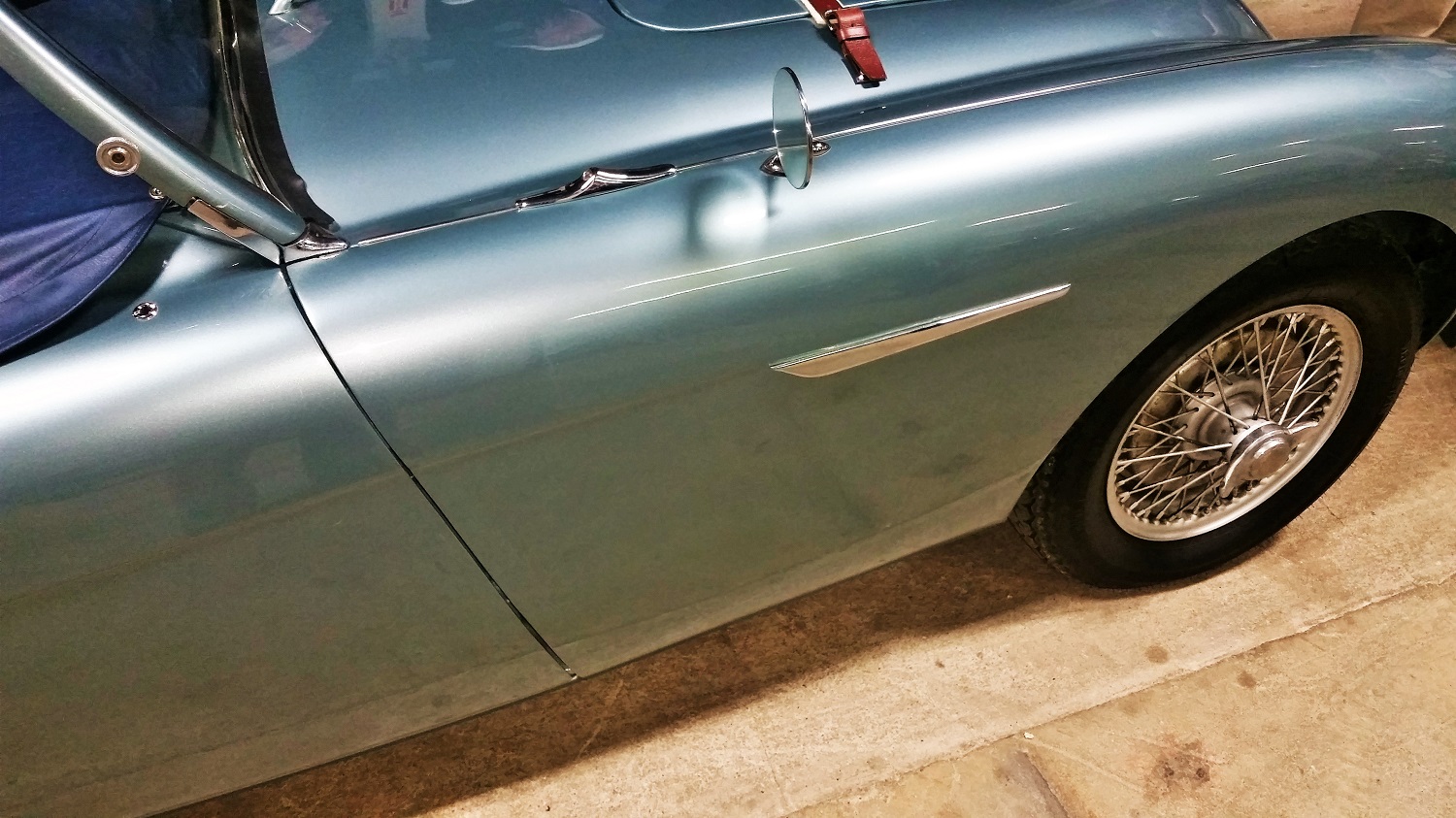
|
|
|
|
|
|
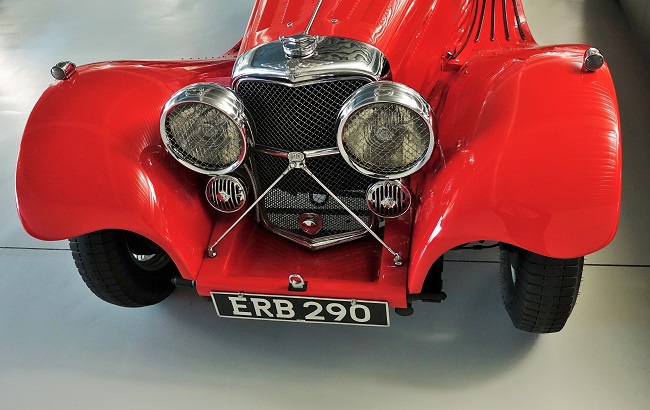
|
|
Jaguar SS-100 roadster
This car, along with its direct predicessor the SS-90, represented the first true sports car produced by Jaguar Cars (then with its name as SS).
This was the first of the lineage that led to the E-type (along with the side brances of the C- and D-type competition cars).
|
|
|
|
|
|
Right rear view of a Morgan
These cars were in production at the same time as the E-type.
Perhaps they represented the opposite pole from the E-type.
|
|
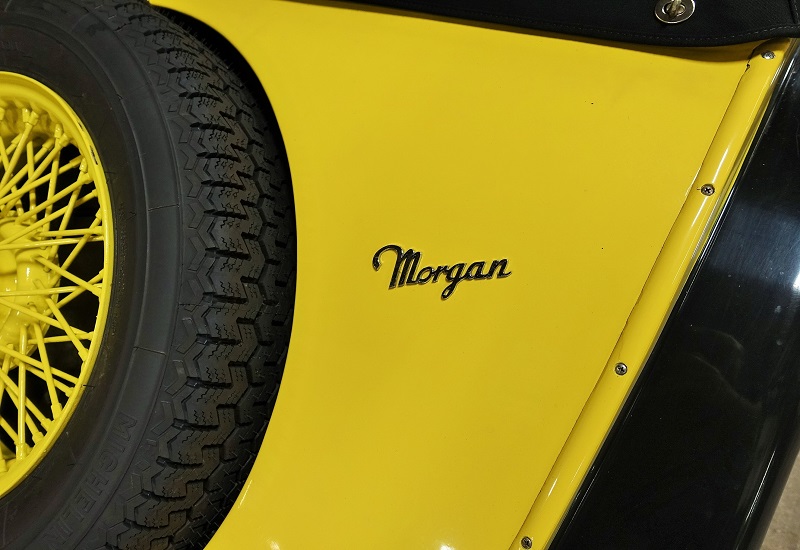
|
|
|
|
|
|
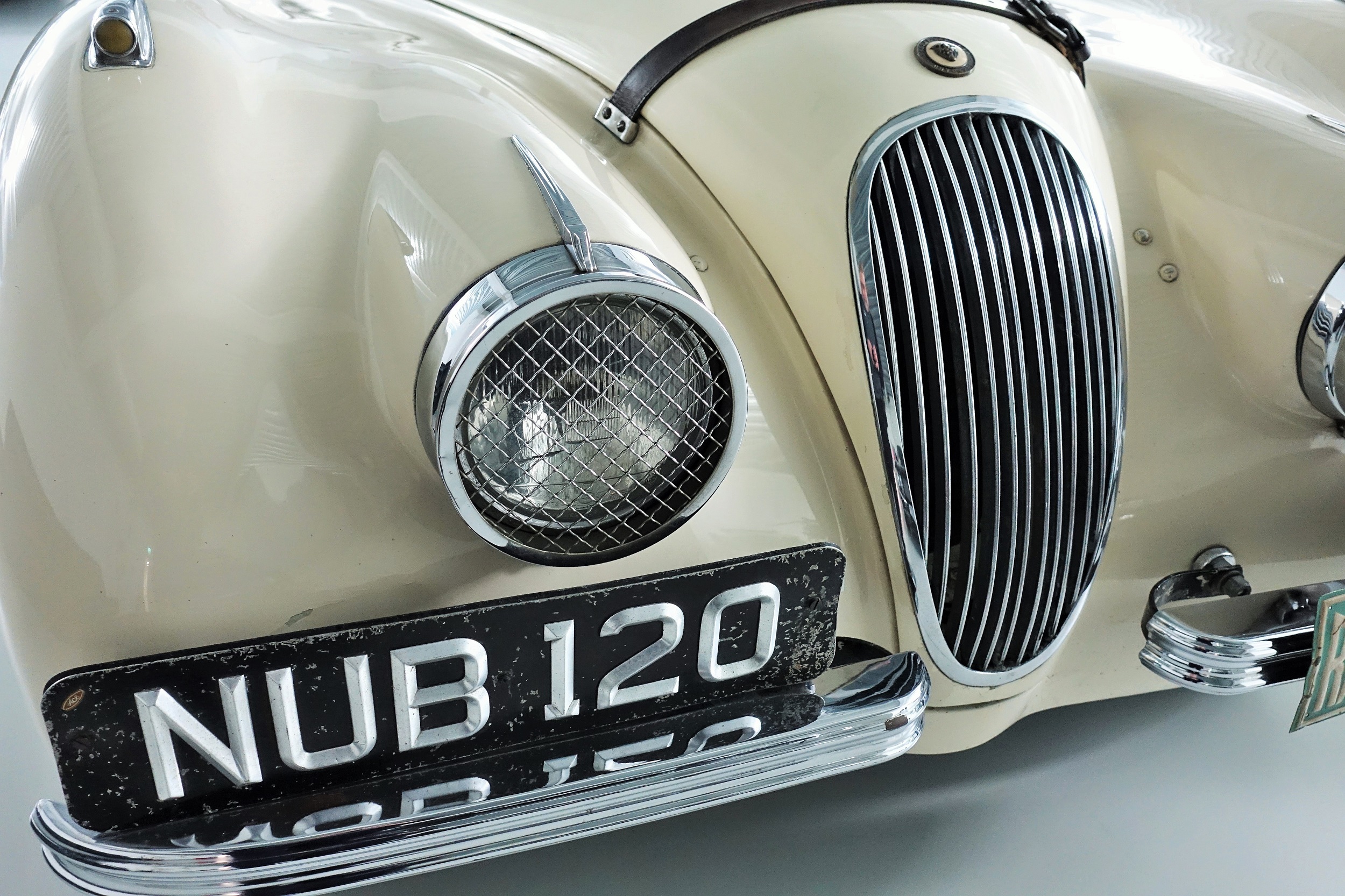
|
|
Alloy-body XK-120 NUB 120
This fameous car is on display at the Gaydon facility.
|
|
|
|
|
|
Sunbeam Rapier with rust
Just like E-type roadsters, this Sunbeam has rusted in two.
Unlinke the monocoque E-type, however, this car has a ladder frame.
It still rusted in two.
|
|
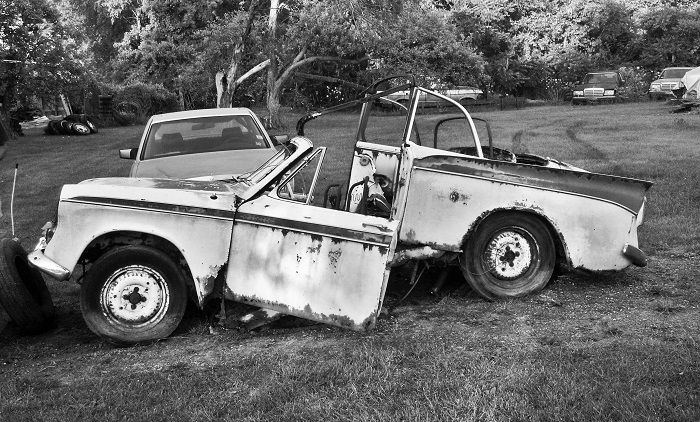
|
|
|
|
|
|
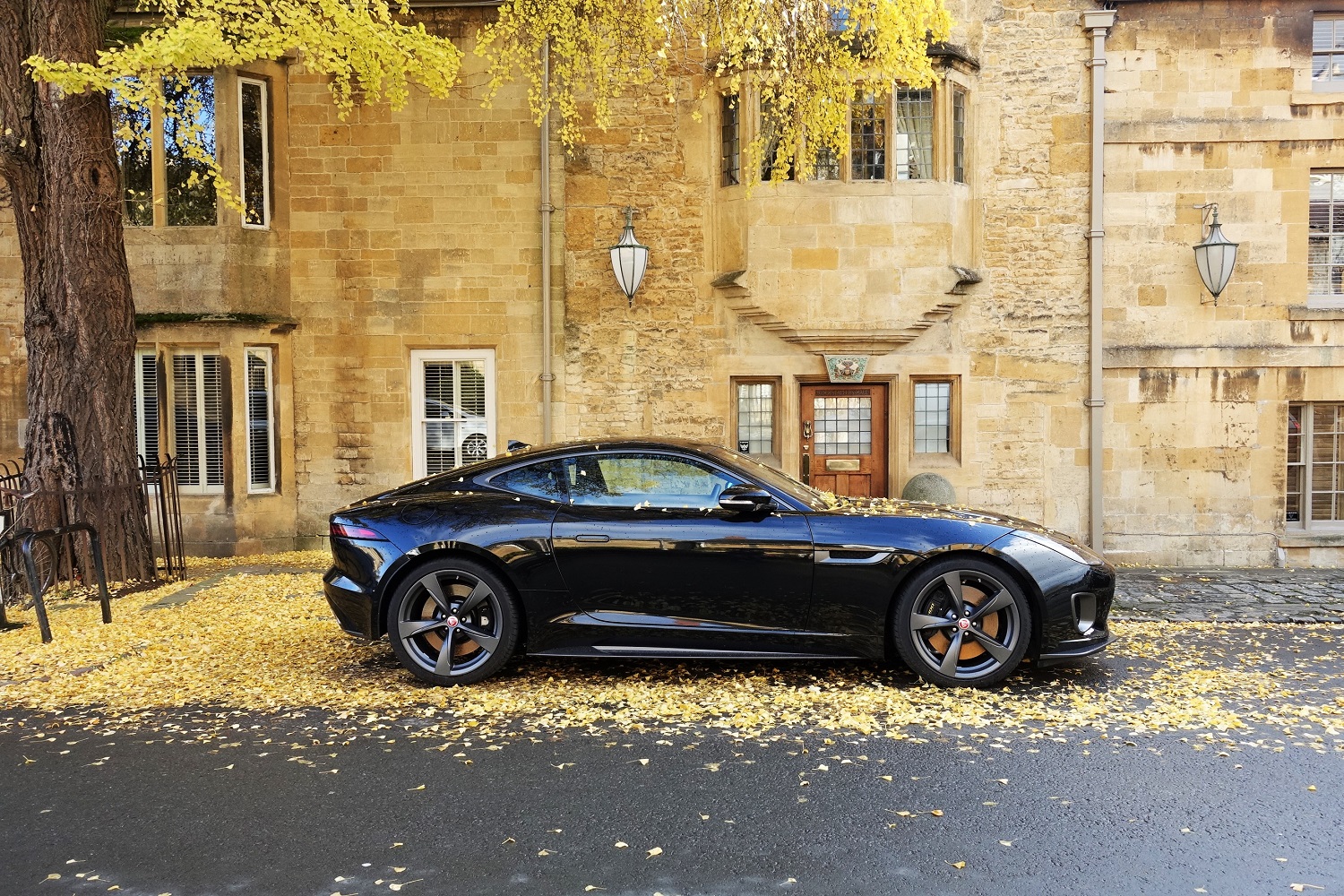
|
|
Modern Jaguar
. . . parked on the street in the West Midlands.
|
|
|
|
|
|
Jaguar Mk 2 sports sedan in blue
Introduced a couple of years prior to the E-type, this second-generation continuation of the Jaguar sports sedan series continued the traditional post-war Jaguar styling.
The E-type was a complete break with the production Jaguar styling, carrying the racing D-type style to Jaguar's production cars.
Note also here the leaping cat mascot that was used on some Jaguar sedans; this feature was never included on the XK-series or E-type sports cars.
|
|
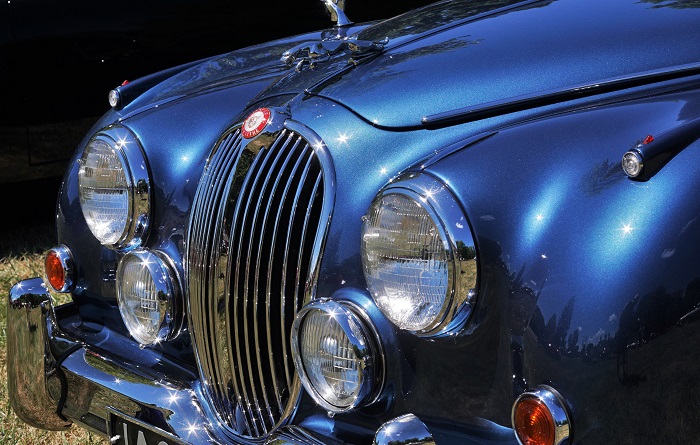
|
|
|
|
|
|
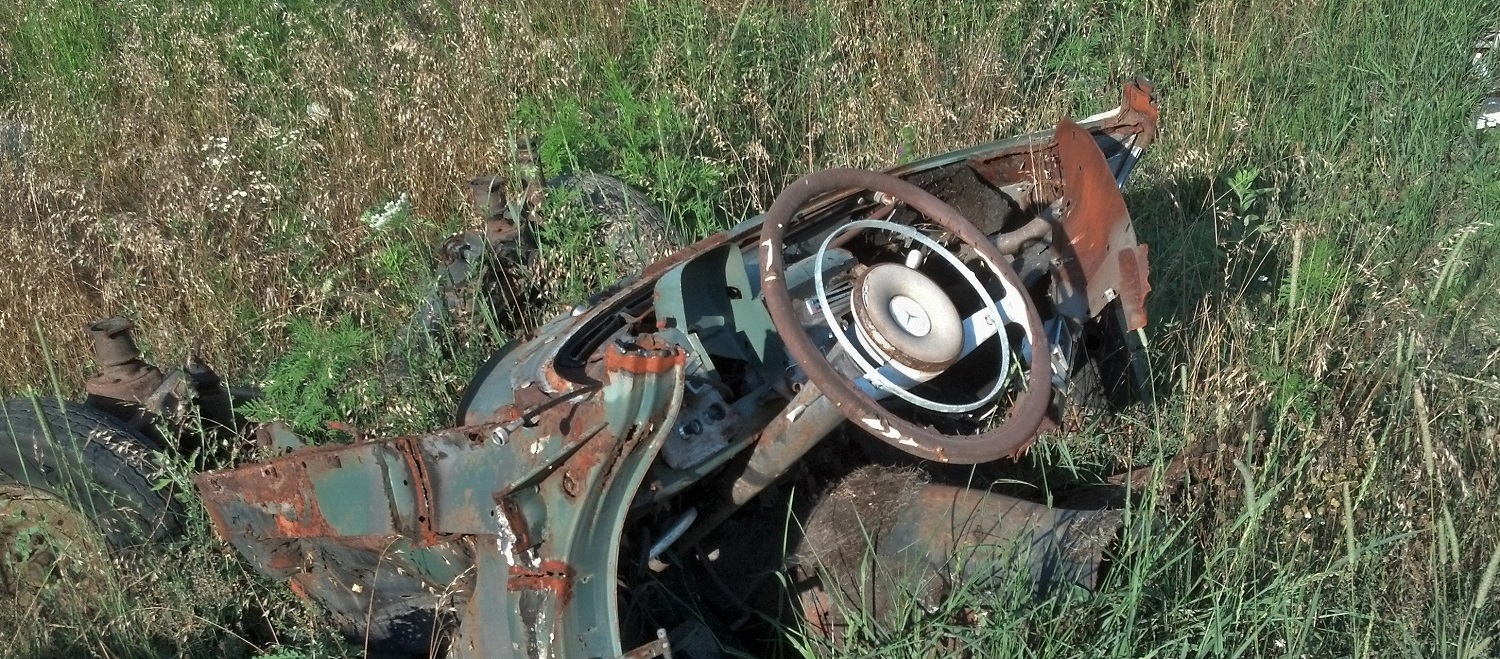
|
|
Mercedes Benz parked in a field
This Mercedes shared the fate of many classic cars, including many E-types.
|
|
|
|
|
|
MGA
Dash view of this MGA shows the wire-spoke steering wheel used on many British cars during the period of the E-type.
The E-type's drilled-out aluminum wheel was the exception.
|
|
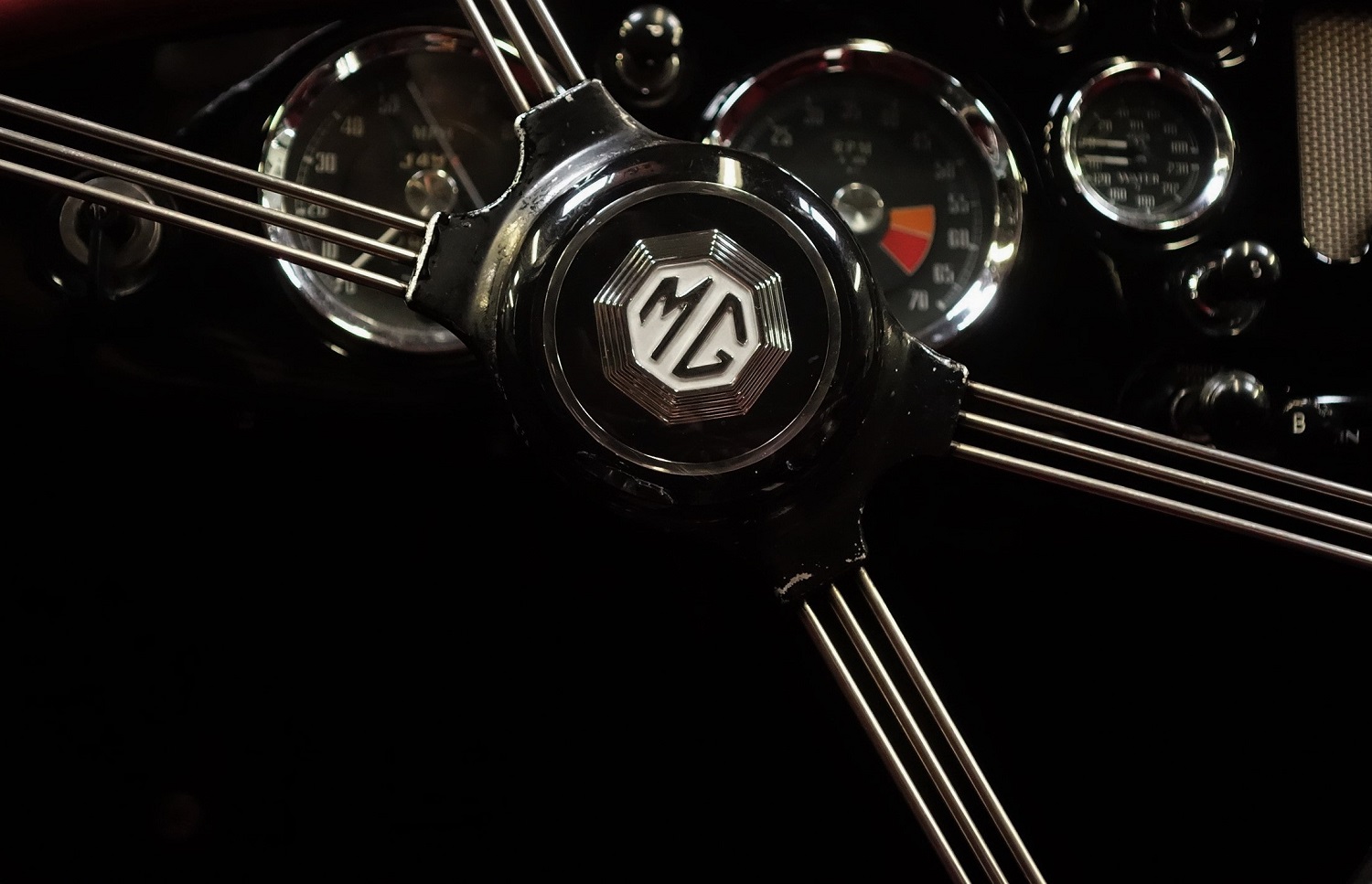
|
|
|
|
|
|
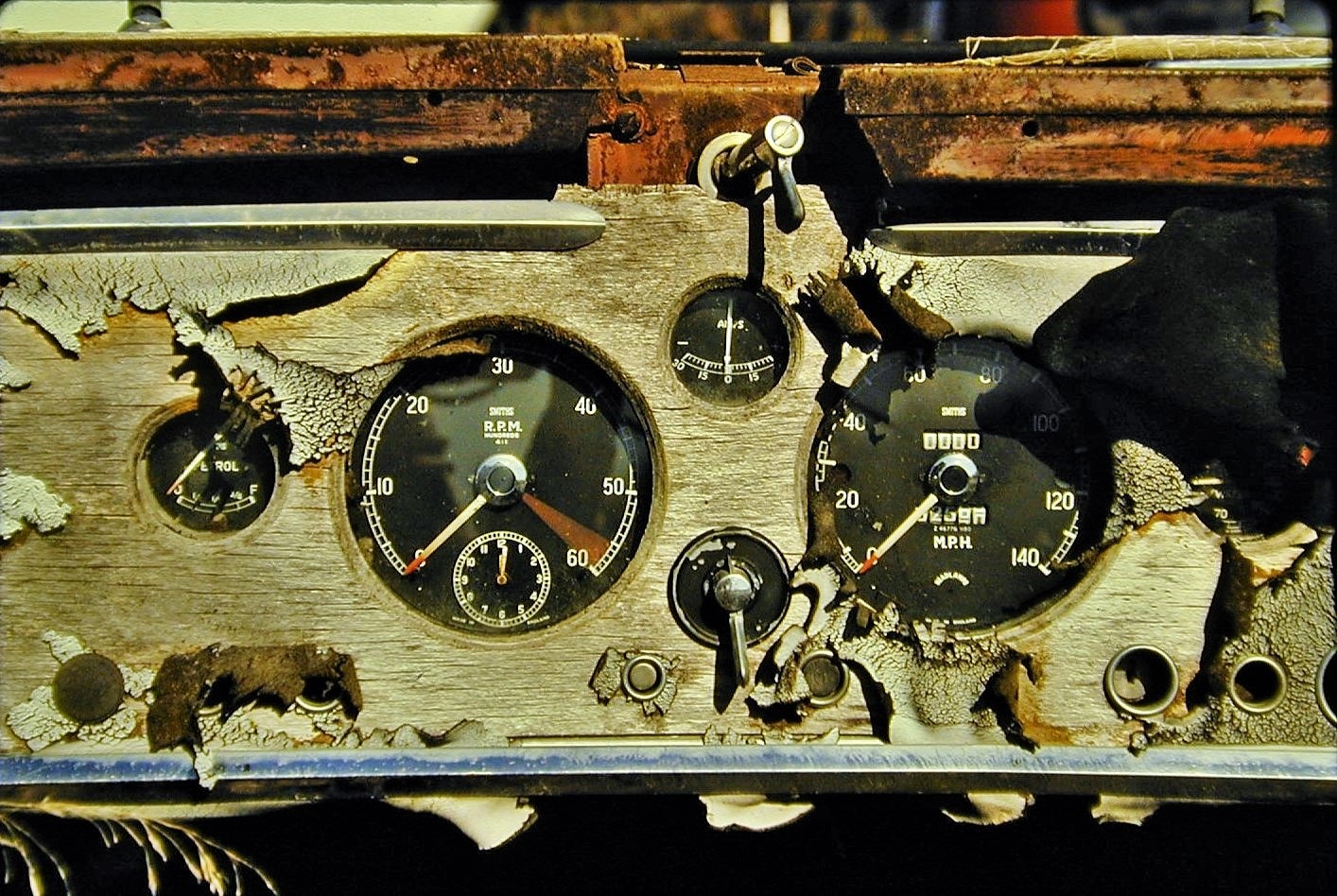
|
|
XK-150 dashboard
In keeping with the rest of the XK series, the main instruments were located in the center of the XK-150's dash.
The roadsters, such as seen here, had a leather covered dash. Here some of the leather is missing, showing the wooden frame below.
|
|
|
|
|
|
XK-150
The XK150, the direct predecessor of the E-type, was of the traditional XK-series design. It carried much more chrome trim than the E-type, as well as bumper protection for U.S. parking conditions.
It was also a much heavier car.
|
|
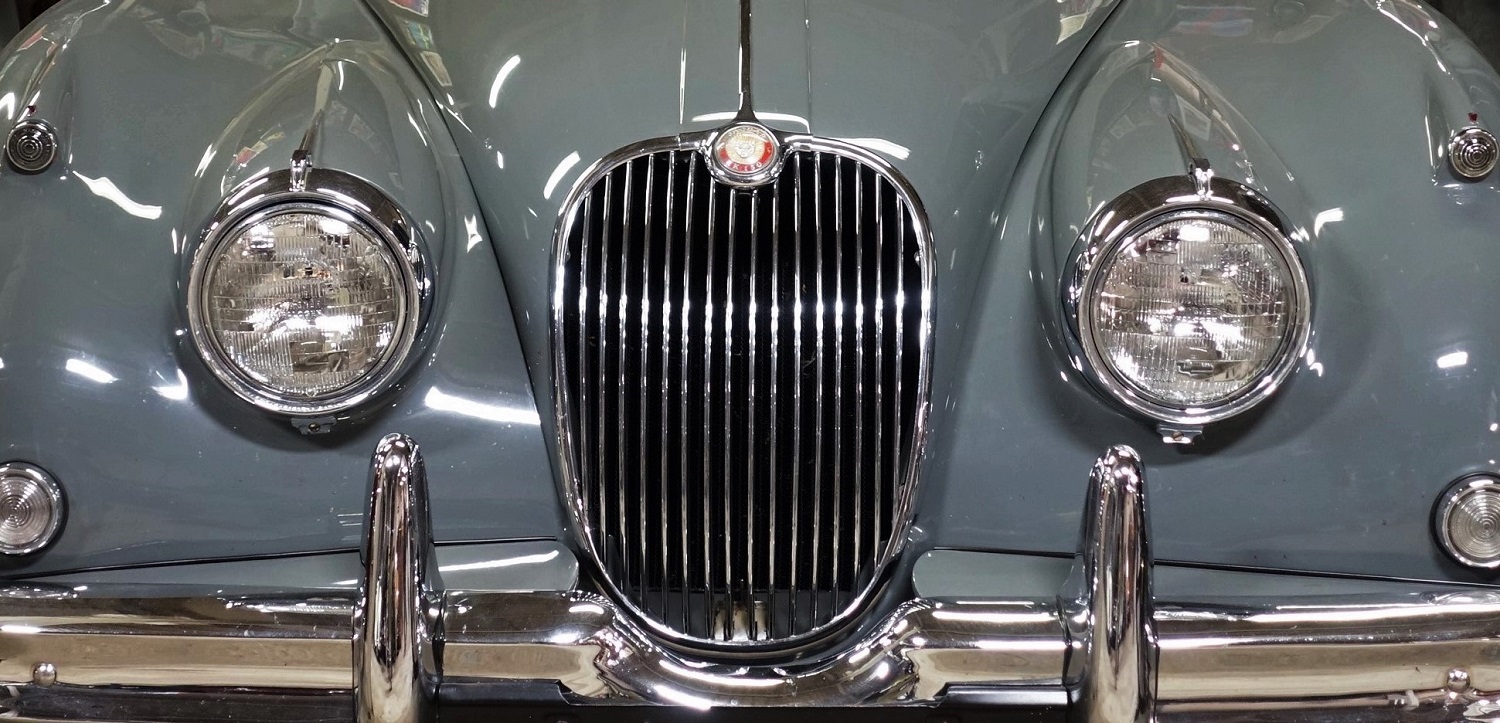
|
|
|
|
|
|
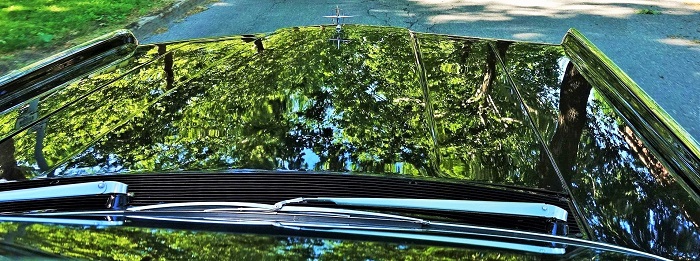
|
|
Lincoln
This view down the hood of a 1960s Lincoln Contentinal shows the squared-off body style and especially large size of U.S. cars marketed during the period of production of the E-type.
|
|
|
|
|
|
D-type
Restored D-type sitting on grass.
|
|
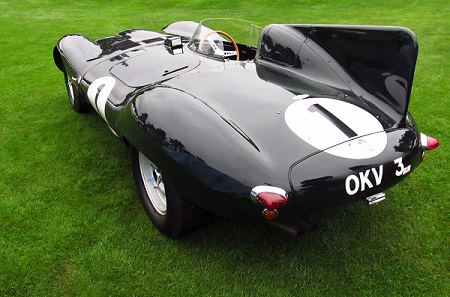
|
|
|
|
|
|
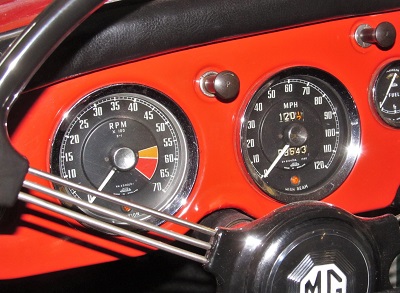
|
|
MGA dash
The MGA, like most sports cars of the E-type's era, had chromed bezels around the instruments, in contrast to the E-type's matte black.
|
|
|
|
|
|
White XK-120
Front contours of an XK-120 coupe.
|
|
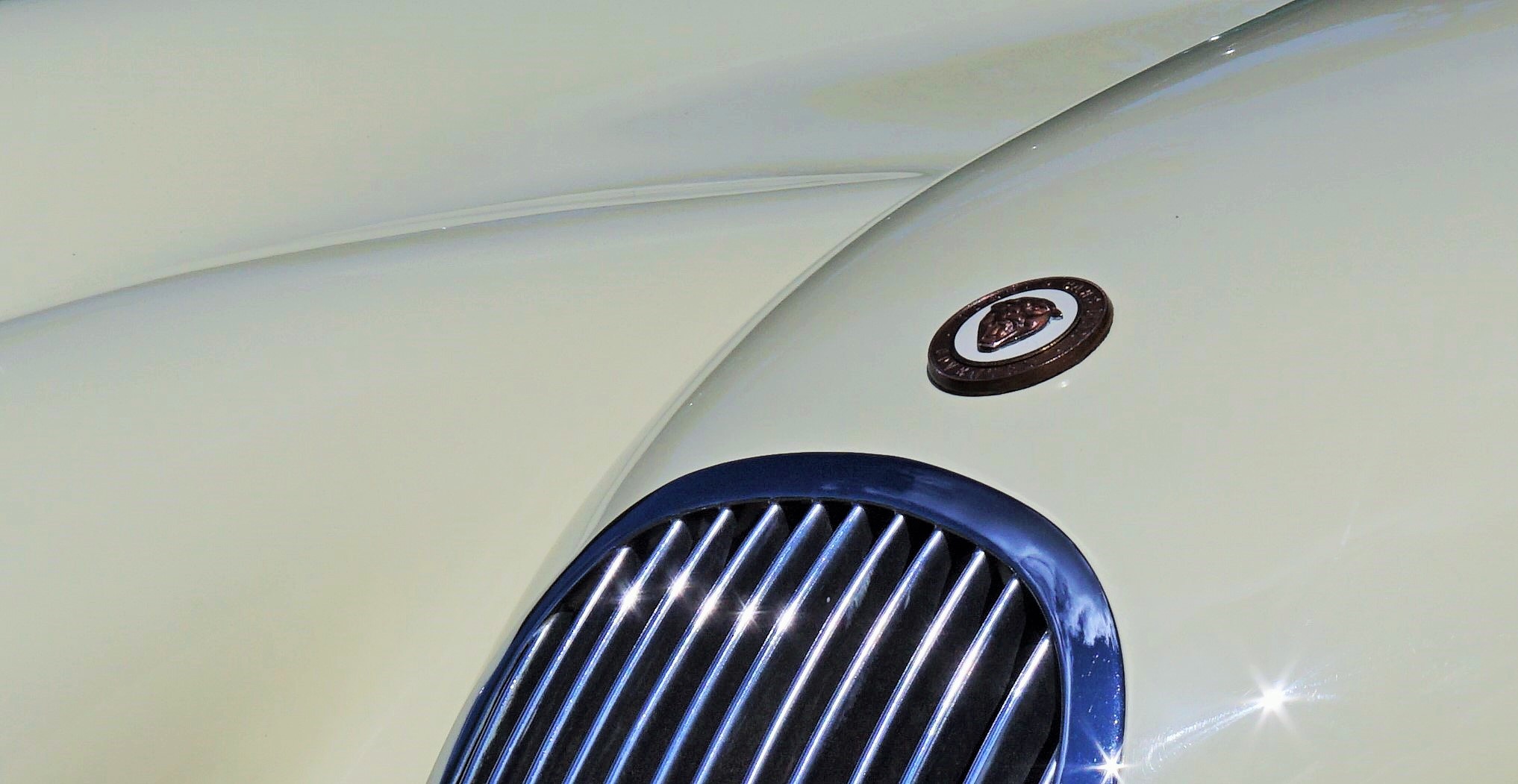
|
|
|
|
|
|
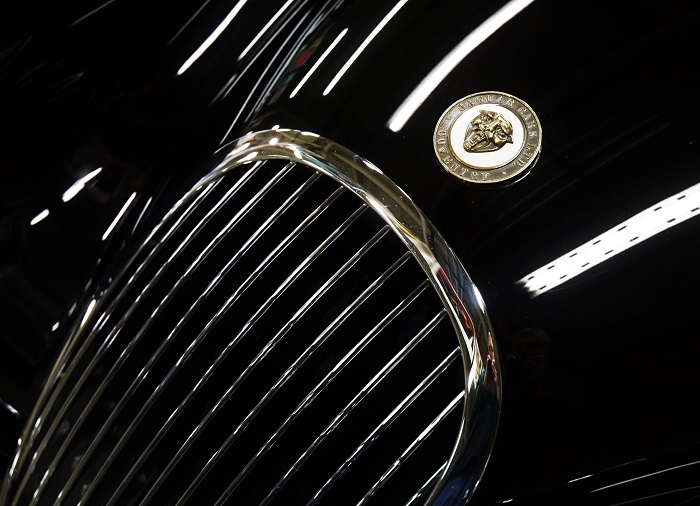
|
|
Black XK-120
Grille and escutcheon of an XK-120 coupe.
|
|
|
|
|
|
Alloy center-lock wheel from a D-type.
This wheel shows beautiful patina.
|
|
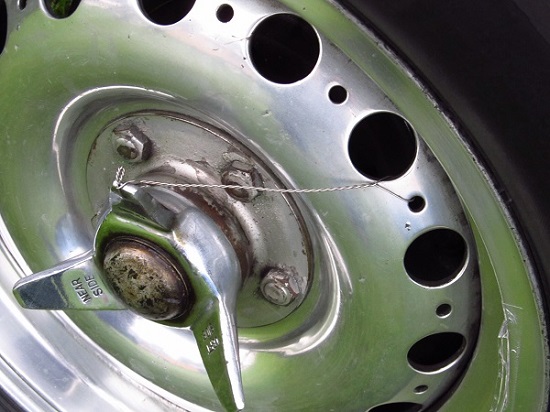
|
|
|
|
|
|
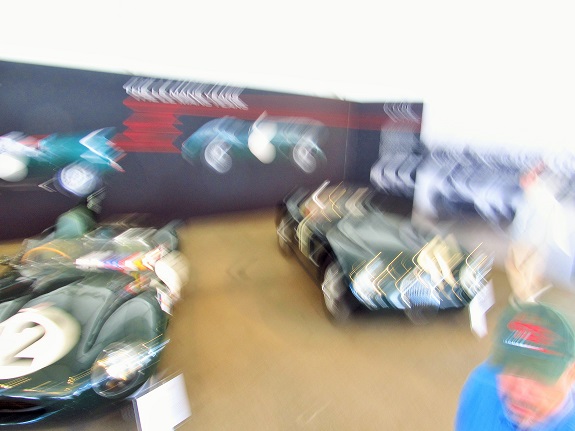
|
|
Display of C- and D-type cars.
In memory of the Le Mans years of Jaguar racing.
|
|
|
|
|
|
Apparently the Twin H-Power was the first dual-carb and dual-manifold setup employed on an American six-cylinder engine.
This engine was used in the Hudson Hornet.
|
|
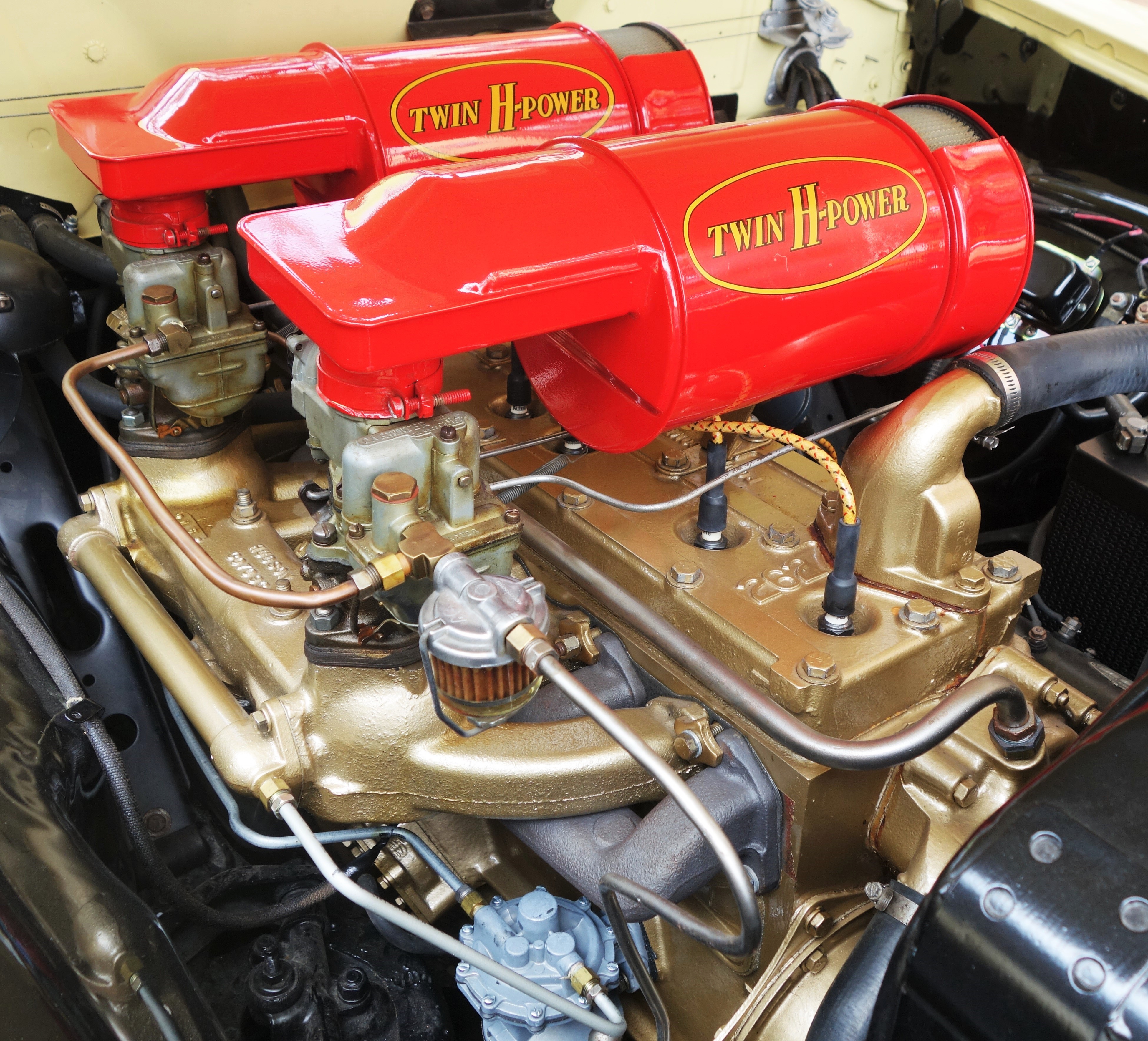
|
|
|
|
|
|
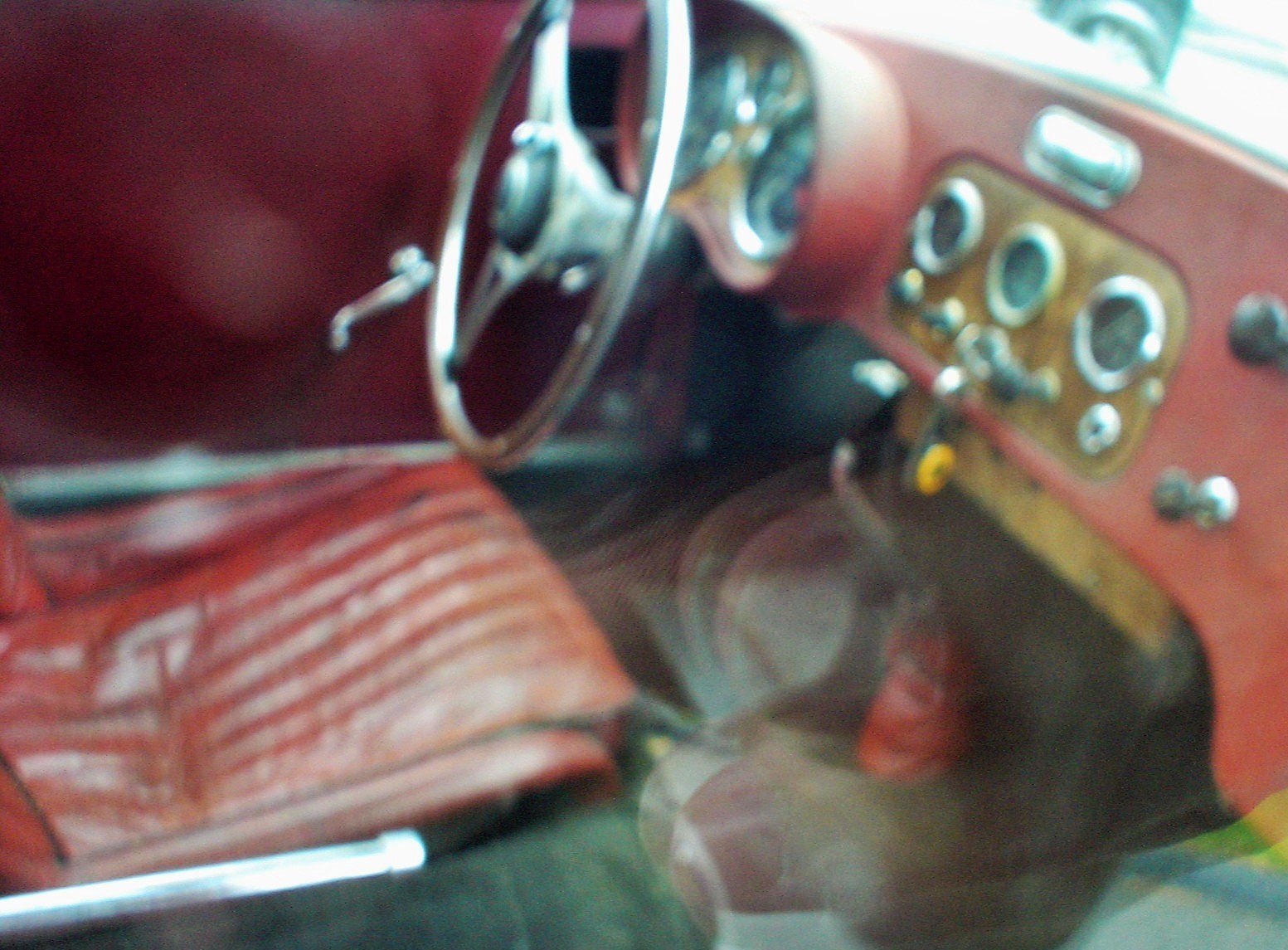
|
|
Interior of AC coupe.
This AC interior shows the classic AC steering wheel with curved spokes.
The ash tray is of the same sort used in the early 3.8 E-types that swivels around.
|
|
|
|
|
|
XK-140 dash plaque
Some XK-120 roadsters and XK-140 roadsters had dash plaques attesting that the cars were replicas of cars that set records.
These plaques had different top speeds on them, depending on the car.
Early XK-120 roadsters, before speed records were made, did not have any plaque.
Generally, aluminim-bodied XK-120s (after plaques were introduced) state the the car was an "EXACT REPLICA," but sometime around when the steel bodies were introduced (perhaps exactly at this point) the plaque stated the car was a "REPLICA."
|
|
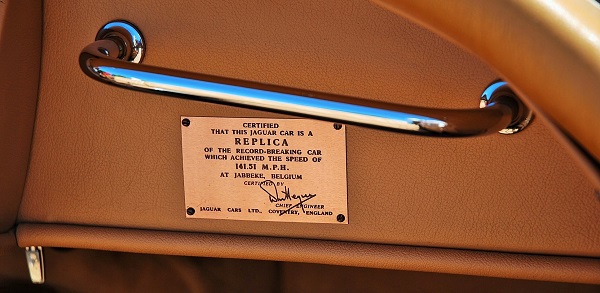
|
|
|
|
|
|
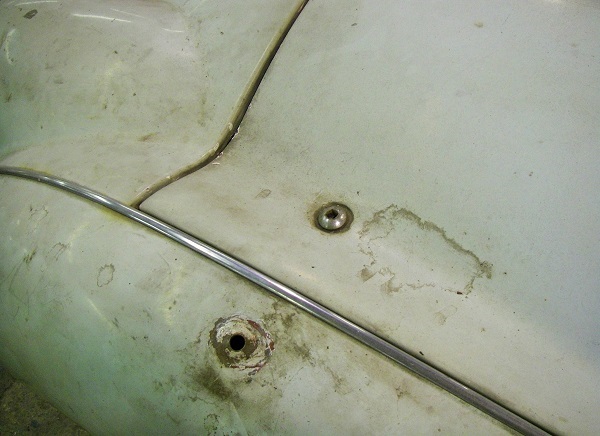
|
|
Triumph TR3.
The bonnet of this TR3 (one of the variations, TR3, TR3A, TR3B) is locked with rotating locks that are turned by a T-key, in a manner similar to how the first-500 E-type bonnets were locked.
In this case, however, the square aperture receiving the T-key is seen on the surface, rather than being below the sheet-metal surface and covered with a spring-loaded cover, as were the E-types.
However, some of the rear covers (trunk lid, spair tire cover) did have recessed T-key recepticals and, in at least some cases, T-key covers of the sort found on the first-500 E-type bonnets.
|
|
|
|
|
|
The V-8 engined Corvettes were the U.S. counterpart to the English Jaguar E-types and German Porsche 911s.
|
|
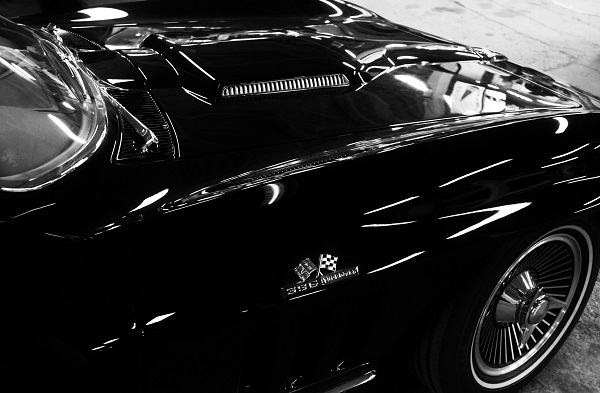
|
|
|
|
|
|
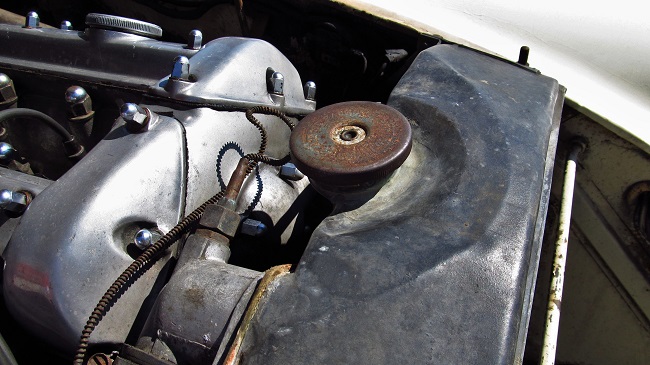
|
|
An XK-120 with a beautiful patina, appearing to be very original.
Note the early-style temperature gauge sender unit. A fluid-filled bulb is contined in the junction to the radiator, with a tube running back to the gauge on the dash. The tube is protected by the wire-wrapping around its external surface.
In the E-types, the temperature gauge sender is a thermoresistive unit located in the front of the water rail in the intake manifold.
|
|
|
|
|
|
Ferrari 275 GTB.
This beautiful car shares some aesthetic similarities with the E-type.
|
|
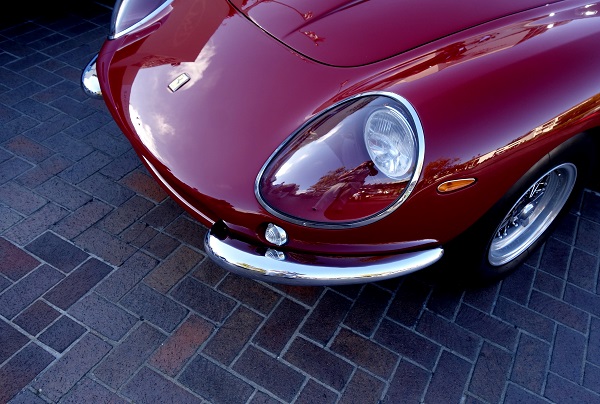
|
|
|
|
|
|
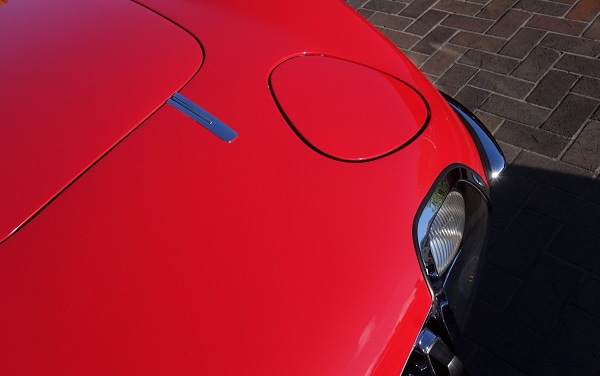
|
|
Toyota 2000 GT.
This GT car was manufactured by Toyota from 1967 to 1970 in very small numbers.
|
|
|
|
|

